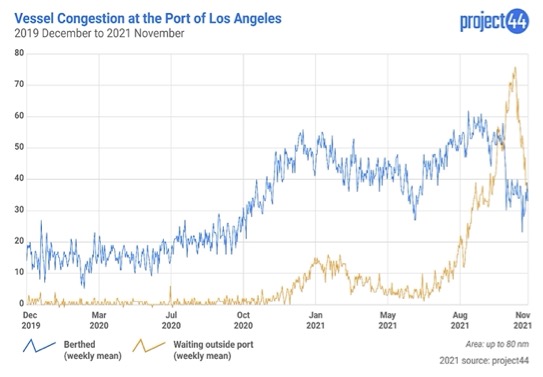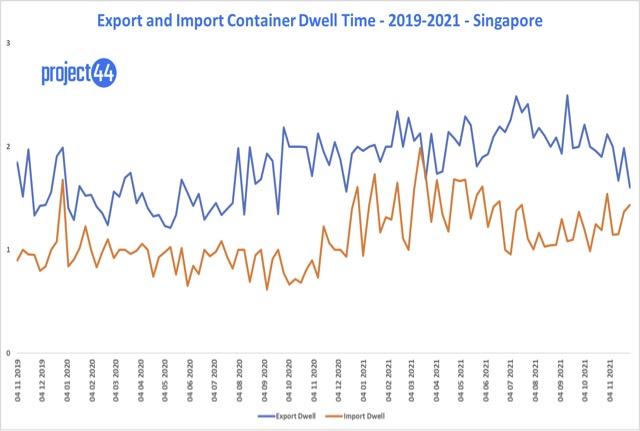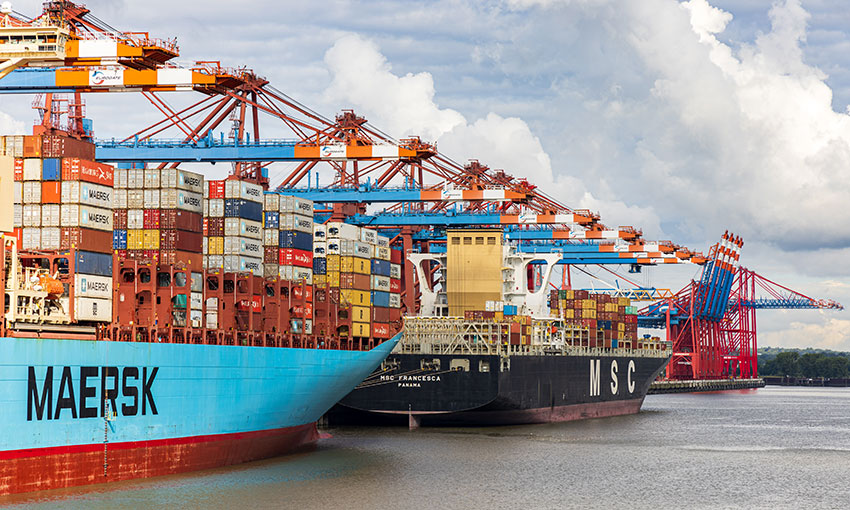CURRENTLY there are dozens of ships are slow steaming way off the coast of Southern California and 37 container ships are currently waiting in the immediate vicinity to unload at San Pedro Bay ports, as container dwell times begin to rise again.
Export containers are building up not just in the ports of Los Angeles and Long Beach but at many major ports globally, according to the latest supply chain visibility data tracked by project44. It says containers are arriving at major ports long before their actual sailing date and taking twice as long to leave the port as import containers.
Connected to thousands of carriers worldwide and having comprehensive coverage for all ELD and telematics devices on the market, project44 supports all transportation modes and shipping types, including air, parcel, truckload, rail, intermodal, and ocean.
project44 says export containers at the Port of Los Angeles took an average of 11.85 days to be loaded on a ship between October 2021 and November 2021 while Port of Long Beach took an average of 10.98 days.
With export containers taking about twice as long to move through US West Coast ports as import containers, the problem appears to be getting containers off of docks and onto ships.
Based on project44’s data and analysis, long export container dwell times occur when ships berth days after their scheduled berthing times. While these ships wait at anchor, containers that were delivered on time languish at the docks, waiting for their arrival.
While vessel traffic data a drop in waiting directly outside the ports of Long Beach and Los Angeles in the second half of November 2021, Josh Brazil, VP of data insights at project44, warns that this drop could be due to the change in the definition of “the waiting zone” based on the new berthing queue system implemented by the San Pedro Bay ports.
“The definition of ‘berth waiting time’ has indeed continually changed throughout this ordeal.
“For our measurement we’ve used a generous 80 nautical mile (92 miles) radius out from the port on anchored container ships and contaiiner ships and with vessels <5 knots speed.
“However, at least about 50 vessels are slow steaming way off the coast gradually making their way to San Pedro Bay which essentially changes the definition of ‘waiting’ all the way back to the port of origin.”

The berthing delays however are impacting the container dwell times for export containers globally.
Container dwell time measures the time that:
● containers spend in port after being discharged from a ship until it leaves the port for delivery to clients, in the case of imports.
● containers spend in port after being delivered to the port until they are loaded onto ships, in the case of exports.
For the month of November 2021, export container dwell time data from project44 has consistently tracked more than twice the dwell time of import containers.
In Los Angeles, on 1 November the export container dwell times were 11 days, versus 5.04 days for imports. At the end of November, the disparity was even more pronounced, with export containers dwelling 17.49 days versus 6.42 days on imports – more than 2.5 times.
Long Beach seems to have outperformed Los Angeles in regards to dwell time with an export dwell time of 6.83 days and import dwell time of 5.49 days on 1 November, but this has increased dramatically to an export dwell time of 15.16 days and an import dwell time of 7.97 days at the end of November which has been the highest it has ever been.
Many of the other main ports tracked around the world paint a different picture with South East Asian ports like Singapore and Hong Kong showing marked decreases in export container dwell times.

Chinese base ports on the other hand are showing more or less similar trends in export and import dwell times but with more fluctuations month-on-month.
Rotterdam, one of the main ports in Europe and Jebel Ali, one of the main ports in the Middle East respectively, reflected a hybrid situation with export dwell times not as bad as the USA but not as good as the South East Asia/China ports.
Rotterdam had an average of 6.76 days export dwell time and 2.91 days import dwell time across 2021 while Jebel Ali had an average of 6.27 days export dwell time and 3.26 days across 2021.





